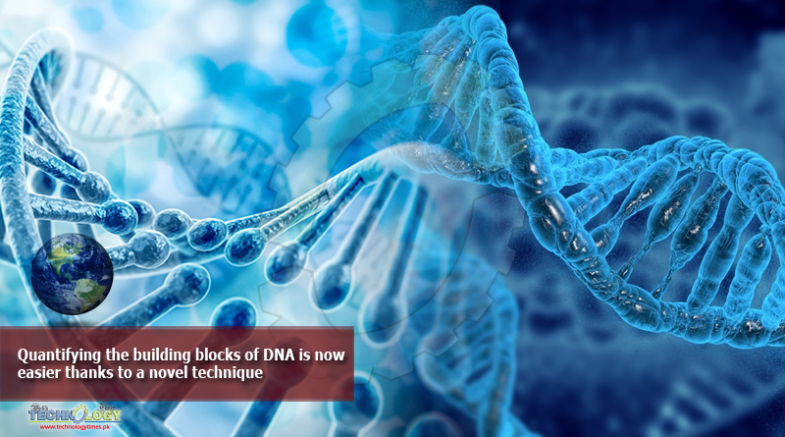A highly sensitive and easy-to-use novel technique applicable for tissue samples can be useful, for example, to researchers specialized in mitochondrial diseases and cancer.

DNA, or deoxyribonucleic acid, carries genetic information in the chromosomes of cell nuclei and in mitochondria. DNA is a double helix composed of two long, coiled strands of polynucleotide chains. The chains are composed of four different deoxyribonucleosides attached to each other through phosphate bonds: deoxyadenosine (dA), deoxythymidine (dT), deoxycytidine (dC) and deoxyguanosine (dG).
When DNA is replicated during cell division or when it requires repair, DNA polymerase enzymes produce a new strand of DNA, using deoxyribonucleoside triphosphates (dNTP) as its building blocks. The energy needed for this synthesis comes from the chemical energy charged in the phosphate bonds of the dNTPs.
With previously available novel technique, measuring dNTP concentration has been a challenge particularly in the case of samples with little DNA synthesis and, thus, a low dNTP concentration. Now, researchers have developed a technique which allows measurement of dNTP concentrations with much improved sensitivity, for example, from small tissue samples collected from mice.
The study was published in Nucleic Acids Research.
“Our assay is based on DNA polymerase and other materials commonly used in molecular biology laboratories. The assay requires no special equipment or radioactive substances,” Docent Jukka Kallijärvi says.
A sensitive method needed for investigating mitochondrial diseases
Mitochondria are organelles that are responsible for cellular respiration, but they also have many other functions. The synthesis of pyrimidine nucleosides, such as thymidine and cytidine, is directly dependent on the mitochondrial respiratory chain. In mitochondrial diseases, deficiency in the respiratory chain function can cause disturbances in the biosynthesis of nucleosides and their phosphorylated counterparts nucleotides.
In rapidly dividing cells, such as those in the bone marrow and cancerous tissue, dNTP concentrations are high, while in cells that divide slowly or not at all, such as liver and muscle cells, the concentrations are very low. However, all cells need some dNTPs for repairing DNA damage and maintaining mitochondrial DNA.
In patients suffering from a mitochondrial disease known as GRACILE syndrome and in its mouse model, the main symptoms appear in the liver and kidneys. These tissues have few dividing cells and, therefore, also a low dNTP concentration.
“I started measuring the amount of dNTPs in mouse tissue and quickly realized that the previous method was not suitable for tissue samples,” says doctoral student Janne Purhonen.
A novel robust and sensitive assay solved the problem
In the new dNTP assay developed by the researchers, significant innovations included the use of a DNA polymerase, which tolerates impurities in the sample, as well as the utilization of a sensitive fluorescent dye that separated double-stranded from single-stranded DNA.
One of the novel technique challenges was the disturbance potentially caused by ribonucleotides, the building blocks of RNA that may be thousands of times more abundant than dNTPs in tissues. Developing the technique, Purhonen realized that the addition of another enzyme that cuts the DNA strand at an erroneously added ribonucleotide allows differentiation of the correct and false reaction products based on their melting temperature. This way, the signal due to erroneously incorporated ribonucleotides could be removed.
The study was carried out by the GRACILE research group headed by Docent Jukka Kallijärvi and Professor Emerita Vineta Fellman at the Folkhälsan Research Center.
“We hope the assay will turn out useful to researchers of mitochondrial diseases as well as elsewhere in biological and medical research,” Kallijärvi says.
Originally Publish at: https://phys.org/
